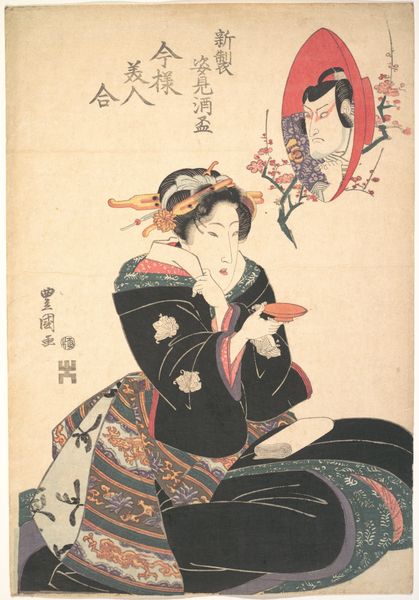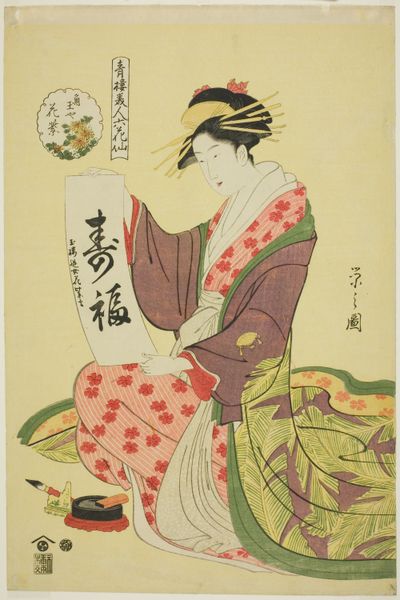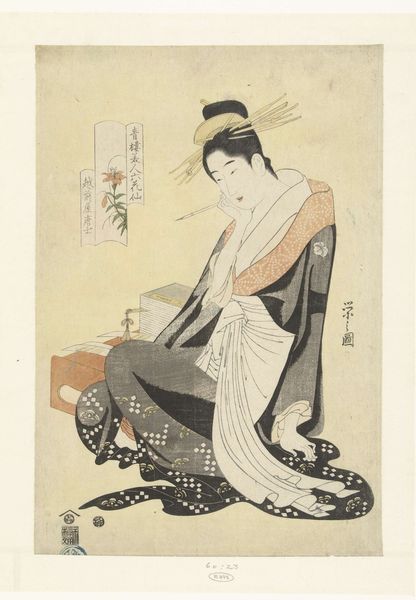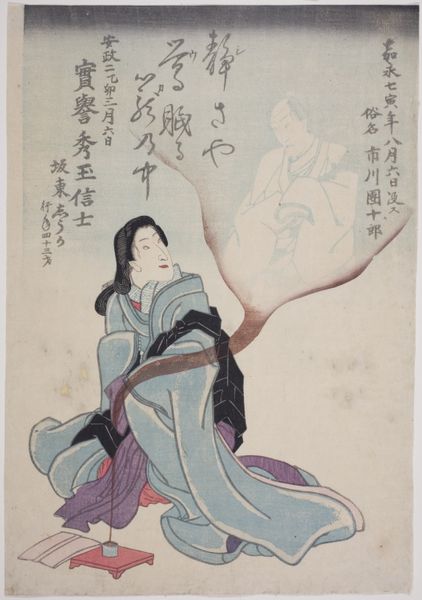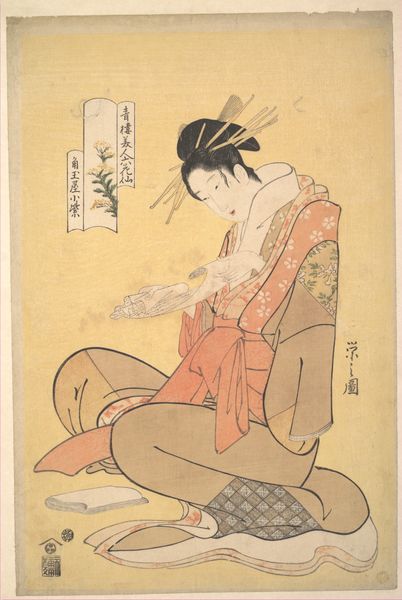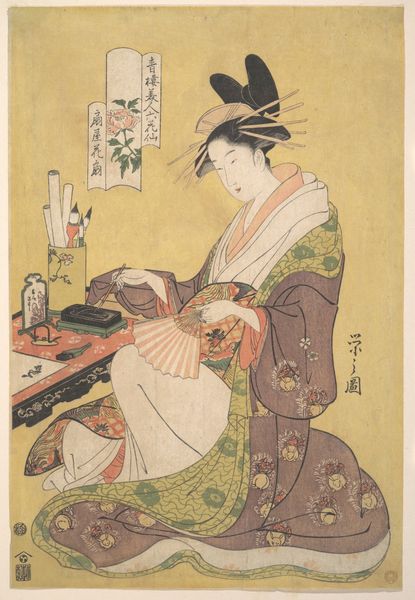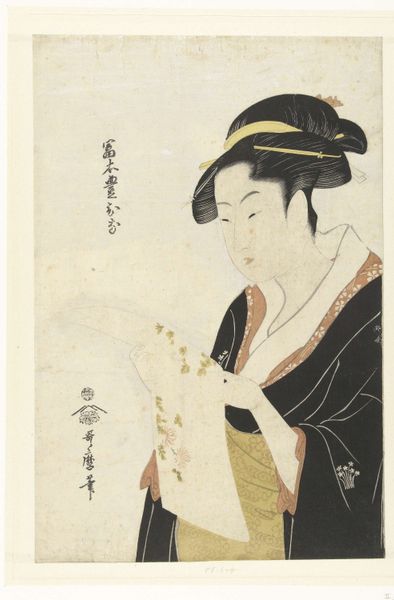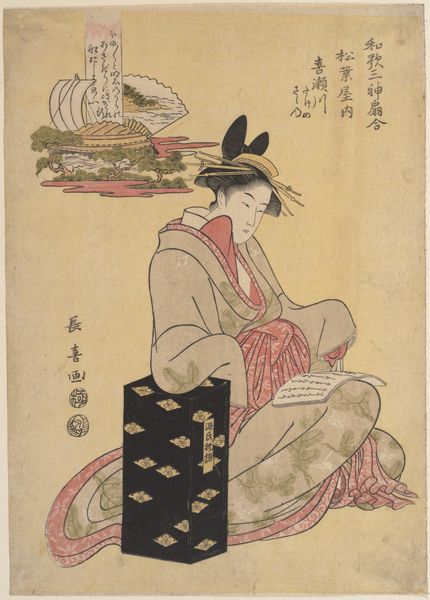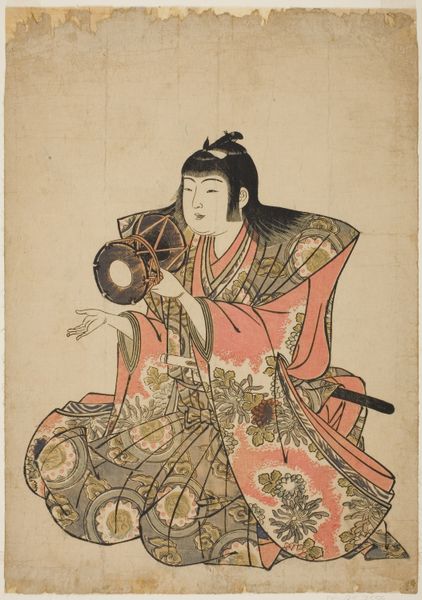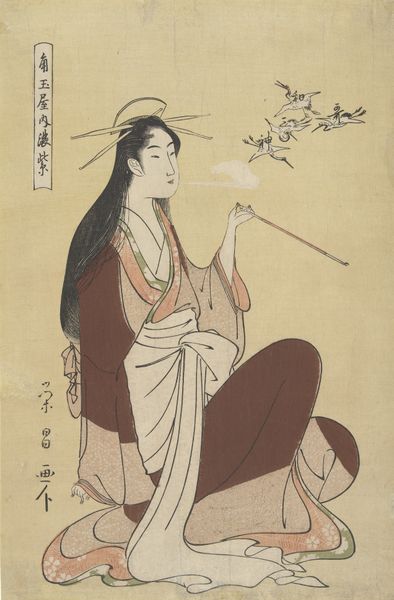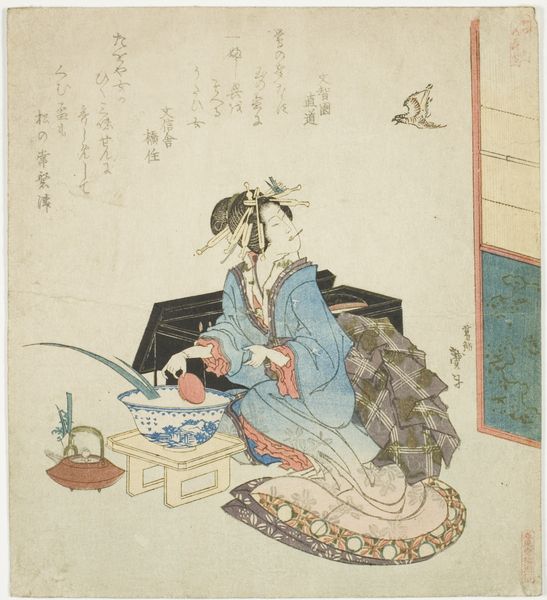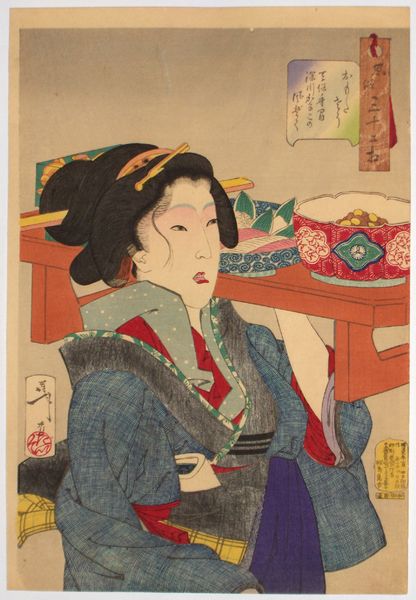
print, woodblock-print
#
portrait
# print
#
asian-art
#
ukiyo-e
#
figuration
#
woodblock-print
#
genre-painting
Copyright: Public Domain
Curator: This woodblock print, created around 1860, is titled "Memorial Portrait of the Actor Onoe Kikugoro IV.” It currently resides at The Art Institute of Chicago. Editor: It’s interesting. My initial reaction is one of subdued grief. There’s a quietness to the scene, a formality, even though it depicts a seemingly domestic moment. The figure looks to be composing a letter, or perhaps even a poem. Curator: Well, let's delve a little deeper. This print belongs to the Ukiyo-e tradition, known for capturing scenes from everyday life, but it also memorializes a specific individual. Onoe Kikugoro IV was a celebrated Kabuki actor, and these memorial prints served an important social function within the theatre community. It's about preserving his legacy within the context of Kabuki performance. Editor: Yes, and Kabuki was a deeply political cultural institution. I find myself questioning the narrative around gender roles as well. Although Kikugoro was male, he is portrayed by an "Onnagata," an actor specializing in female roles. Curator: That's absolutely right. These prints, while commemorating his life, are doing so by showing him *as* the embodiment of a female role. The role within Kabuki often blurred gender lines and served as a social commentary, in the end creating a unique commentary on fluidity and performance. Editor: The attention to detail, particularly the actor's makeup and the exquisite kimono patterns, underscores the artificiality, or perhaps better said, constructed persona that is always present on stage. And, knowing the period, this art was accessible to a wider audience because of the production style. Curator: Exactly. The relatively low cost of woodblock prints allowed these images to reach a broad spectrum of society, cementing Kikugoro's fame and the popularity of Kabuki theatre. Editor: It seems to also invite discourse on remembrance. If the Kabuki community saw memorializing a person only as portraying him in the role he acted, doesn't this somewhat reduce who he was beyond the play he staged? I feel conflicted about this. Curator: It’s a tension, certainly. But the power of the print resides in its recognition that identity, whether on stage or in life, is often a performance negotiated within social constraints and conventions. Editor: Indeed, thank you for making visible what went beyond its mere memorial aspect.
Comments
No comments
Be the first to comment and join the conversation on the ultimate creative platform.
